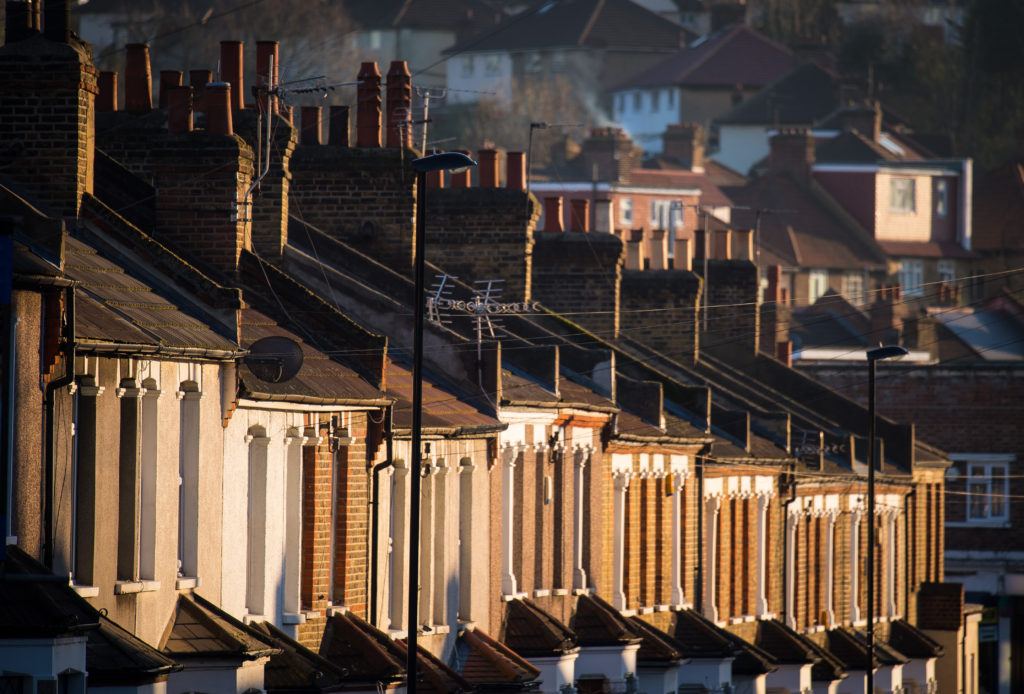There is so much wrong with HTB. It sounds fine in theory – allowing people to buy a new home with a deposit worth only 5% of the cost and a low-interest equity loan from the government. But, in practice, it has made a bad problem even worse.
For one thing, HTB only applies to new-build homes – and, since its introduction, powerful developers have used the demand spike to sell a slew of small, low-quality homes, racked with faults and often on extremely punitive ‘leasehold’ ownership structures, which require on-going payments and makes homes difficult to sell.
HTB is a huge cash bonanza for the already extremely powerful large developers that dominate the UK’s housing industry, a sector that a recent House of Lords report described as showing “all the characteristics of an oligopoly”. When news that a new dollop of HTB was in the offing was reported ahead of May’s speech, the UK’s biggest house-builders added £1bn to their market value in a single day.
The government estimates that around 135,000 new homes have been bought under HTB, and it hopes for a similar number from this new funding. Yet, the scheme is very tough to access and the overwhelming effect of it, not withstanding those it has helped, is to juice up the market even more, pushing prices even further out of reach for the vast majority of those trying to claim a stake in the property market, as they look to settle down and raise a family.
“The real problem of course, is a chronic lack of supply,” said John Longworth, former President of the British Chambers of Commerce. “HTB is fine for those get the help but it won’t address the real problem,” Longworth told me in Manchester, “and the real problem is the UK’s greedy large developers who are banking land”.
The Adam Smith Institute has panned HTB. The UK property market is “totally dysfunctional because supply is so tightly constrained” says the influential free-market think tank:
“Adding more demand without improving the supply of houses is just going to raise house prices and make homes more unaffordable for people who don’t qualify for the help-to-buy subsidy.”
Rather than injecting more taxpayers’ cash into a property market already bloated by a glaring demand-supply imbalance, to say nothing of the inflationary impact of a massive ‘quantitative easing’ programme which has now endured for almost a decade, the government needs to take drastic steps to ensure more homes are built.
When the Adam Smith Institute and Shelter agree that your housing policy is flawed, “you can be sure there is a major problem”
-
Even Shelter, the highly-respected housing charity, has criticised HTB, saying last year that it “barely helped the first-time buyers it is targeted at”. Yet, still, May has taken the easy option of extending the all-powerful large house-builders another bung. She deserves the negative headlines. When the Adam Smith Institute and Shelter agree, you can be sure there is a major problem.
The problem is that May is failing to loosen rules to allow the construction of more homes in high demand areas – including in her own ‘green belt’ constituency of Maidenhead, to the west of London. Since taking office in 2010, the Tories have also allowed the UK’s highly-concentrated house-building industry to amass vast landbanks and delay the conversion of planning permissions in actual homes, boosting prices and profits by imposing a deliberate house-building go-slow.
At the 2016 Conservative party conference, during this platform speech, Communities Secretary Sajid Javid called time on the large house builders. “The big developers must release their stranglehold on supply,” he said. “It’s time to stop sitting on land banks and stop delaying build-out. The homebuyers must come first”.
Earlier this year, Javid produced a housing white paper which originally contained radical measures to punish developers who hold back supply by breaking agreed limits on how quickly planning permission should result in saleable homes. The measures were watered down, though, rendered almost toothless, just as the developers wanted.
Small and medium-sized builders, meanwhile, who accounted for three-fifths of all home built in Britain in the mid-1980s, now account for less than a fifth. Unable to access adequate land, and often starved of bank finance, the smaller builders – vital to spur competition, and get houses built fast – are increasingly pushed out by the ‘big boys’. More HTB does nothing to help those builders, and by stoking up demand while doing nothing to unlock supply it makes a bad position even worse.
The other aspect of May’s “bold housing offer” in Manchester was a promise to build more government-owned social housing – homes with heavily-subsidised rents, made available to low-income workers. For decades, the construction of social housing has been risibly low – falling to single digits hundreds per annum under Tony Blair during the early 2000s, and still in the low single-digit thousands. If the UK is to build the 250,000 new homes needed each year, then that needs to include some 50,000-100,000 units of social housing required each year. From the conference stage, May offered, “an extra £2 billion in funding for affordable homes” – which is chicken feed. That will pay for around 25,000 new homes, or just 5,000 a year during the period the new funding will be introduced. This is risible.
Ten years ago, almost three fifths of 25 to 34 year-olds owned their own home. Now it’s under two-fifths. Twenty years ago, over 40% per cent of under 25s owned a property. Today it’s less than 20%. Many young and even middle-aged adults, particularly in London and the south east, can see no route out of renting. Meanwhile, the Prime Minister offers 25,000 new council houses in the face of a waiting list that is 1.2m strong. And those 25,000 might not even transpire.
“I will dedicate my premiership to fixing this housing problem,” May told the party faithful in Manchester. If she and those around her don’t grab this problem by the scruff of the neck, demonstrating they understand the extent of our housing crisis, and are willing to impose tough measures to fix it, her premiership will soon be over. Deservedly.








Join the discussion
Join like minded readers that support our journalism by becoming a paid subscriber
To join the discussion in the comments, become a paid subscriber.
Join like minded readers that support our journalism, read unlimited articles and enjoy other subscriber-only benefits.
Subscribe